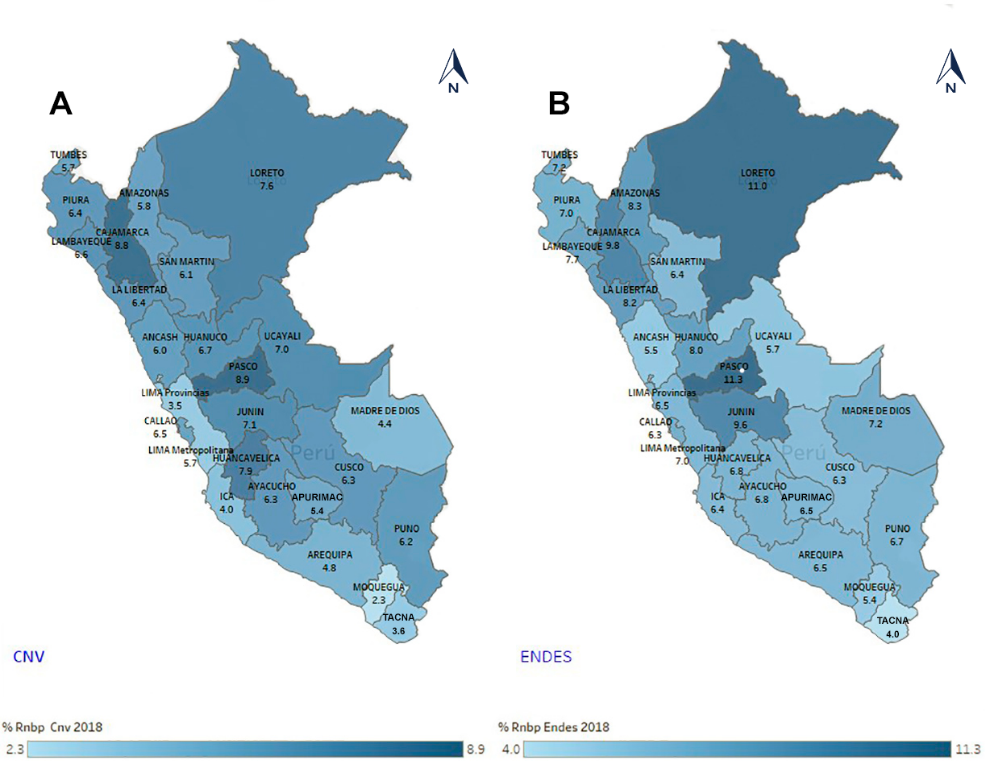Geographic regional distribution of prevalence of low birth weight in Peru
Distribución geográfica de prevalencias regionales de bajo peso al nacer en Perú
DOI:
https://doi.org/10.25176/RFMH.v20i3.2459Abstract
Low birth weight (LBW) continuous to be a global public health problem and it is an important health indicator that identifies the social, economic, and environmental background of the newborn and his family, determined when the birth weight is less than 2500 grams. In Peru, this indicator is evaluated annually through the Encuesta Demográfica y de Salud Familiar.(ENDES). The Ministry of Health of Peru (MINSA) and the Registro Nacional de Identidad y Estado Civil (RENIEC) developed and began the implementation in 2012 of the Certificado de Nacido Vivo en Línea (CNV). This system allows the registration of newborns and generates a real-time birth certificate, also records information such as gender, weight, height, characteristics of gestation and childbirth, among other nominal health variables, this system is free of charge and use by the public and private Health Care Institutions (IPRESS).
Downloads

Downloads
Published
How to Cite
Issue
Section
License
Copyright (c) 2020 Revista de la Facultad de Medicina Humana

This work is licensed under a Creative Commons Attribution 4.0 International License.



































